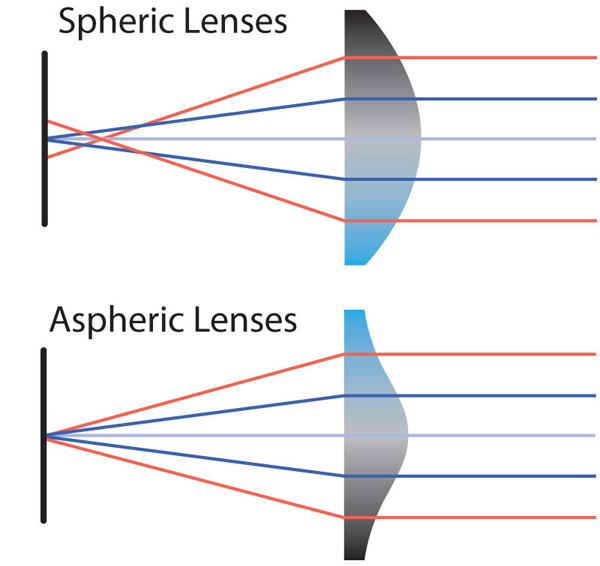Aspheric or Spherical Lenses – Which is best for Vision Applications?
Mar. 01, 2022
In recent years there has been a trend towards increased use of aspheric elements in optical designs. The driving force behind this trend is that a single aspheric element can replace 2 or 3 spherical elements in a design whilst maintaining or improving the performance of the system. While this design strategy certainly seems to work for infrared and laser optics the advantages for incorporating aspheric optics in vision systems is less.

Spherical lenses
Spherical lenses are optical elements that feature a spherical surface with a radius of curvature that is consistent across the entire lens. They are constructed such that the light entering them diverges or converges, depending on the lens design. Concave spherical lenses have a negative focal length that causes incident light to diverge (creating a virtual image). In contrast, convex spherical lenses have a positive focal length that causes incident light to converge (creating real and virtual images). The real images formed are highly focused, while the virtual images formed are highly magnified. The main advantages of using spherical lenses in optical systems are their simpler surface design and lower manufacturing cost. These benefits make them suitable for various imaging applications in a diverse set of markets.
Considering Aspheric Optics?
Aspheric elements are commonly used to correct for spherical aberrations and they do this particularly well in wide angle and large aperture optical designs. However, our experience is that in a typical lens design the benefits of integrating an aspheric element can be outweighed by the cost of aspheric lenses typically being twice the price of a standard spherical lens element.
When CLZ Precision Optics starts developing a new optical design – we always go through whether the use of aspheric elements provides significant advantages over the use of spherical elements. In conclusion, we believe that Aspheric optical elements are not the magic bullet that they are sometime reported to be. They have their place in optical design but they do not automatically improve or add value.
Typically, the best optical designs are the ones that meet the specification requirements with the simplest design. Why make your optical design more complicated than it needs to be.
To discuss a new aspheric / spherical lens design: click here.


















